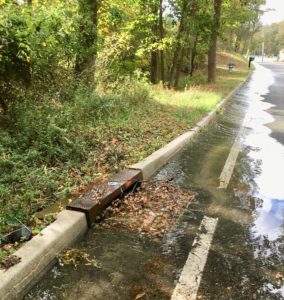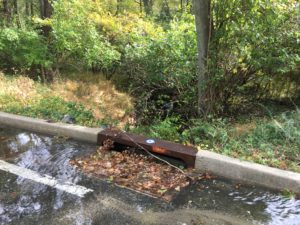Do you put a hose from your pool to the street to empty your pool?
Do you know that the water goes into the street and down the storm drain. Storm drains do NOT go to the sewer treatment plant. They lead to the nearest body of water, for instance Takanassee Lake.
So what can you do?
Swimming Pool Waste Water Fountains are designed to re-purpose properly balanced swimming pool waste water for irrigation. They can be used with sand or cartridge filtration systems. Their spray aerates waste water by sending it approximately six feet into the air. The returning water falls back to the ground like rain typically covering 100 square feet where it can be absorbed into the soil and water the grass.
And what about the grass? Chlorine levels are reduced through the process of aerating swimming pool water.
Waste Water Fountains also reduce the soil erosion normally caused by the forceful blast of a wastewater hose.
Construction is typically durable HDPE plastic. Some models are light enough to carry around with your fingertips. The ones made of HDPE are also recyclable.
You can also talk to someone from your Green Team and ask them to add an ordinance to your town Master Plan.
Here is a sample of a town ordinance in Monmouth County. Check your town’s stormwater ordinance and see what it says.
Per ordinance, it is unlawful to discard, spill or dump any material other than storm water into the municipal storm water system. Further, an illicit connection which is defined as any system that discharges domestic sewerage, swimming pool water, process wastewater or pollutants, is prohibited from discharging to the storm water system. Swimming pool water must be disposed of on the pool owner’s property. Waste water fountains are a good option to reduce water consumption, recycle pool water onsite and minimize soil erosion. The purpose of this ordinance is pollution and contamination prevention.
Swimming Pool Waste Water Fountains are designed to re-purpose properly balanced swimming pool waste water for irrigation. They can be used with sand or cartridge filtration systems. Their spray aerates waste water by sending it approximately six feet into the air. The returning water falls back to the ground like rain typically covering 100 square feet where it can be absorbed into the soil and water the grass.
And what about the grass? Chlorine levels are reduced through the process of aerating swimming pool water.
Waste Water Fountains also reduce the soil erosion normally caused by the forceful blast of a wastewater hose.
Construction is typically durable HDPE plastic. Some models are light enough to carry around with your fingertips. The ones made of HDPE are also recyclable.


